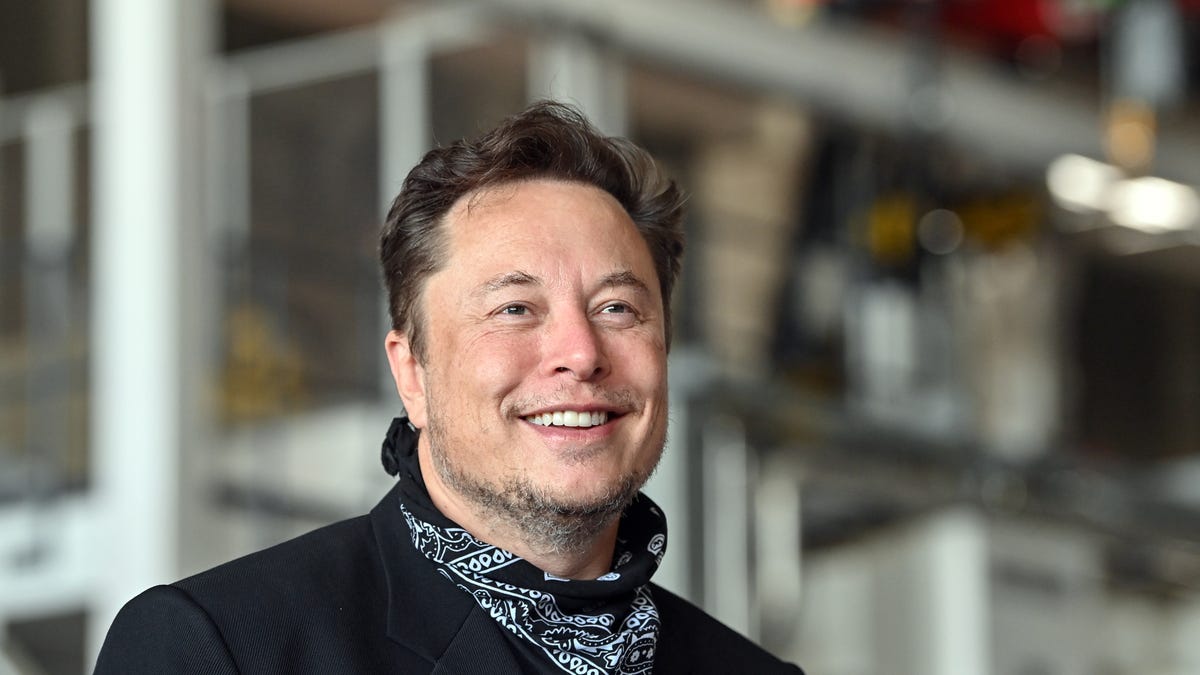What Is a 'Poison Pill'? Twitter Adopts Extreme Strategy to Fend Off Elon Musk Takeover
Twitter deployed the last-ditch tactic after both Musk and Vanguard bought up shares. Here's how it works.

Elon Musk has extended an offer to buy Twitter.
Billionaire Elon Musk offered to buy Twitter outright for $43 billion last week. The social media platform, which Musk already owns more than 9% of, is resisting the hostile takeover by employing what's known as a "poison pill" strategy, which is intended to make a company less attractive to potential buyers.
Earlier this month, Musk filed a disclosure with the US Securities and Exchange Commission stating he had acquired a 9.2% stake in Twitter and may consider increasing his stake, driving rumors that he was interested in acquiring the social media platform. Days later, on April 8, Vanguard Group, the world's second-largest asset manager, upped its ownership stake in Twitter to more than 10%, making it the top shareholder.
Twitter unveiled its poison pill plan on April 15 in response to all this activity and to fend off a hostile takeover. Here's what all of that means.
What is a poison pill?
Though it sounds macabre, "poison pill" refers to a corporate tactic used to thwart an unwanted takeover. It's also referred to as a "Limited Duration Stockholders Rights" plan. The maneuver was engineered by corporate law firms in the 1980s to shield client companies from unwanted acquisition by increasing the number of shares needed for a takeover. It's considered a last-ditch effort because it dilutes shareholder value and can create major collateral damage.
There are two basic kinds of poison pills.
The flip-in poison pill
The more common of the two strategies, a flip-in involves allowing all shareholders but the prospective acquirer to purchase additional shares at a deep discount.
Elon Musk recently extended an offer to buy Twitter.
This is what Twitter is doing: Over the next year, if any person or group acquires 15% or more of the company -- whether Musk, Vanguard or an unexpected contender -- it will trigger an option allowing shareholders to purchase new, discounted shares, thereby diluting the holdings of the hostile party.
According to SEC filings, Twitter's poison pill has an exercise price of $210, allowing each shareholder to pay $210 to acquire stock "having a then-current market value of twice the exercise price." As Bloomberg finance expert Matt Levine points out, that's equal to $420.
The flip-over poison pill
In this scenario, shareholders can buy deeply discounted stock after a hostile takeover is successful. If the acquirer knows such a strategy is lined up, they may avoid going ahead with an acquisition.
Netflix implemented a poison pill in 2012 after Carl Icahn purchased a 10% stake in the company. A shareholder policy meant any attempt to purchase a large chunk of the streaming service without board approval would trigger the release of a raft of new discounted shares. Icahn ultimately sold off his Netflix holdings.
Six years later, Papa John's used a poison pill to fend off an attempt by ousted founder John Schnatter to regain control of the company. With 30% of the pizza chain's stock, Schnatter was the largest shareholder. So to blunt a takeover, the company adopted a poison pill with a "wolf pack provision" that doubled the price of shares for anyone who amassed 31% of Papa John stock, or who purchased 15% without the board's approval.
What is a hostile takeover?
Usually, when one company buys another, it's done with the consent of both companies' ownership or management. When a company -- or individual, in Musk's case -- tries to forcibly take control of another company, that's called a hostile takeover. If Twitter's board and management decide that they don't want to sell, Musk still has options. He can accumulate additional shares on the open market, since Twitter is a public company, or win a sufficient number of shareholder votes to approve a takeover.
A hostile takeover is often the outcome of activist investing, wherein a shareholder (or group of shareholders) feels that a company is being mismanaged or isn't fulfilling its potential in the market, leading to a lower share price. Musk, on the other hand, has said that his interest in Twitter is primarily to protect free speech in its virtual "public square." (It should be noted that the First Amendment guarantees of freedom of speech apply specifically to the government. Companies like Twitter are allowed to make rules about what can be posted on their services.)
What happens when a company goes private?
Musk has made clear that if he gains control of Twitter his intention is to take the company private, as outlined in a letter sent to Bret Taylor, chairman of Twitter's board of directors. That means Twitter would pay its existing shareholders a set price for each share they hold -- according to Musk's tender offer, $54.20 per share. As a part of this process, Twitter stock would no longer be traded on public exchanges.
Musk tweeted that he "will endeavor to keep as many shareholders in privatized Twitter as allowed by law." This suggests he would consider accommodating some financial structure allowing existing shareholders to remain invested in some way if he is successful in privatizing Twitter. Musk referred to a similar arrangement when he discussed taking Tesla private in 2018 at $420 per share.

